Sealed Blind Rivets
SEALED BLIND RIVETS CUP
Applications
- car body production
- construction industry
- tank construction and apparatus engineering
- air-conditioning
- shipbuilding and many others
Characteristics
- lairtight, dust and waterproof (with a fitting drill hole)
- captive mandrel head
- very suitable for automatic production
- high pressure on the join end
- good pressure on the face of the hole
Head shape

Domed head
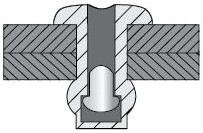

Large head


Countersunk head

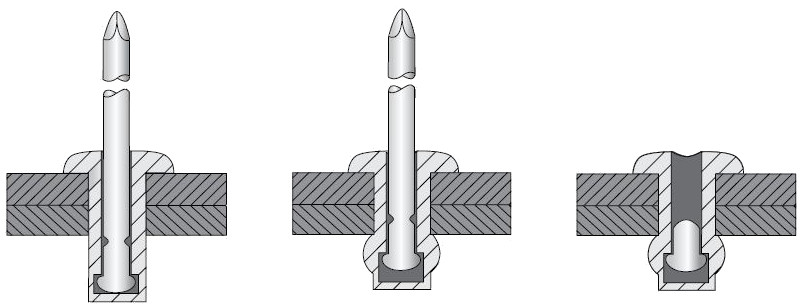
MATERIALS
Al = Alu
ST= Steel zinc plated
A2 = Stainless steel A2
A4 = Stainless steel A4
Cu = Copper alloy
BR = Bronze
Available in the following qualities

TECHNICAL EXPLANATIONS
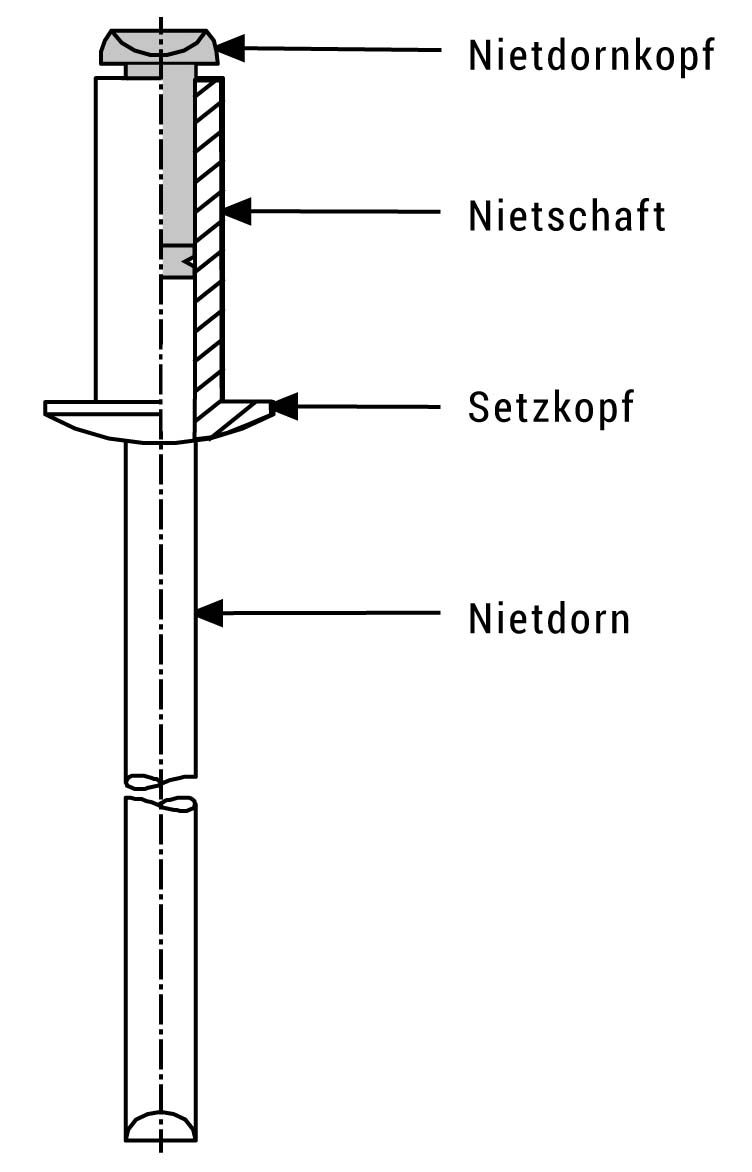 | 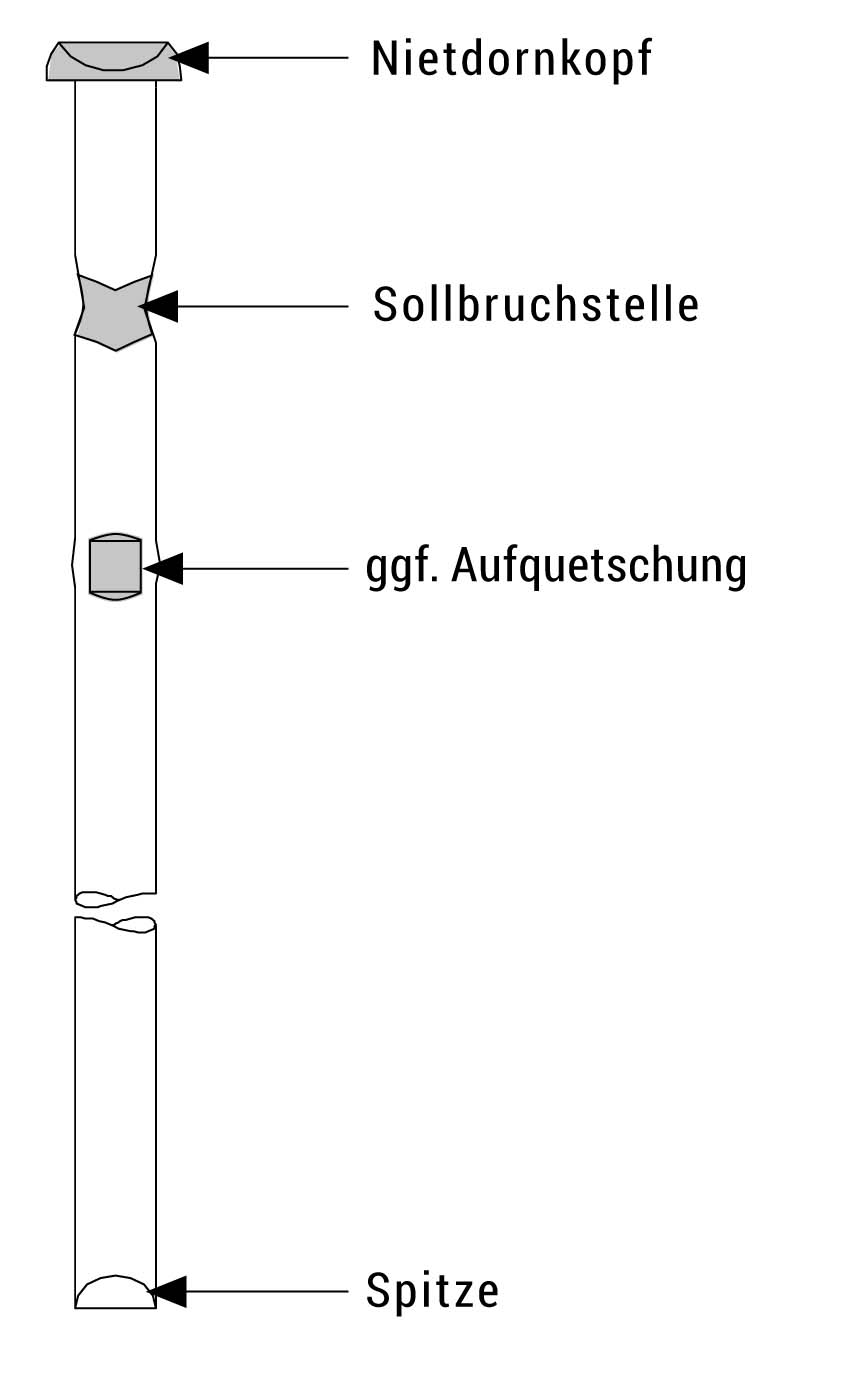 |  |  |
 | Grip range of the rivet. |
 | The named shearing strength (N = Newton) in this catalogue are minimum values, determined according to test method ISO 14589 (2000), which the rivet meets on average in a defined test series. |
 | The named tensile strength (N = Newton) in this catalogue are minimum values, determined according to test method ISO 14589 (2000), which the rivet meets on average in a defined test series. |
| (1 kp ≈ 10 N ) | |
TECHNICS
Length (L)
Nominal Diameter (D1)
Head Diameter (D2)
Head Height (k)
Mandrel Diameter (d)
Mandrel Length (P)

If you are searching for a quality, a material combination or a measurement which is not listed in the catalogue, please don’t hesitate to contact us.
Alternatively we got the possiblity to develop a blind rivet type especially for your application. For Example:
- softer breaking point 1
- displaced breaking point 2
- grooved mandrel 3
- longer mandrel 4
etc.

TESTS ACCORDING ISO 14589
This inspection ISO 14589 includes the following points.
Principle of shear and tensile tests
The tests consist of straining a blind rivet which is set in a test fixture by a shear load or tensile load to failure.
Principle of mandrel push out restistance test (prior to setting)
The test consists of loading the mandrel axially from the head side of a blind rivet untill it is pushed out.
Principle of the mandrel break load test
The test consists of straining the mandrel removed from the rivet body in a test fixture by a tensile load to fracture.
Principle of head retention capability test
The test consists of loading the mandrel axially, from the head side of a set blind rivet up to the head retention load. All details in Newton, 1kp = 9,80665 N (10N). For every delivered batch GOEBEL is able to handout the inspection report. With this procedure it is guaranteed that only tested items will be delivered for a customers safe treatment.
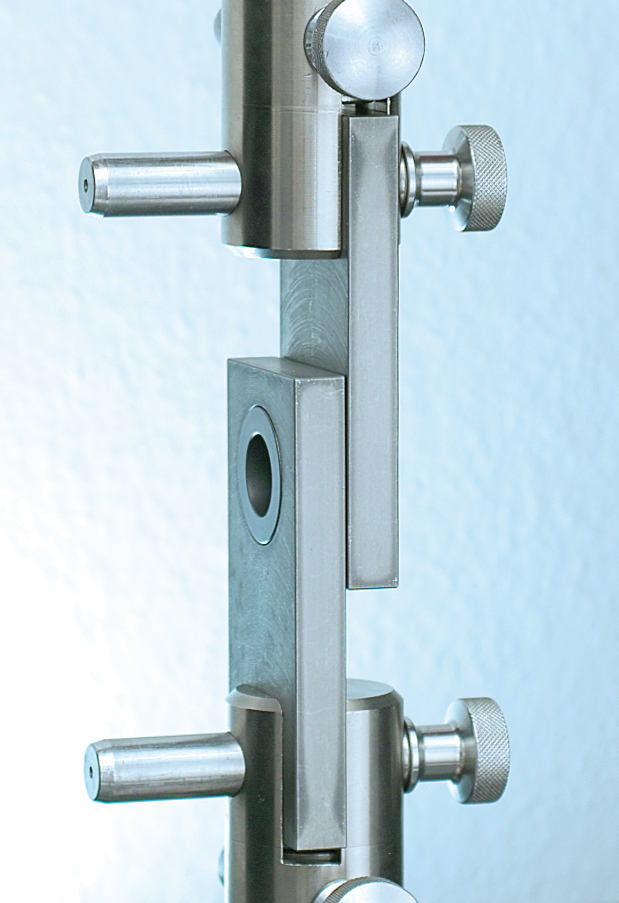
Shearing test
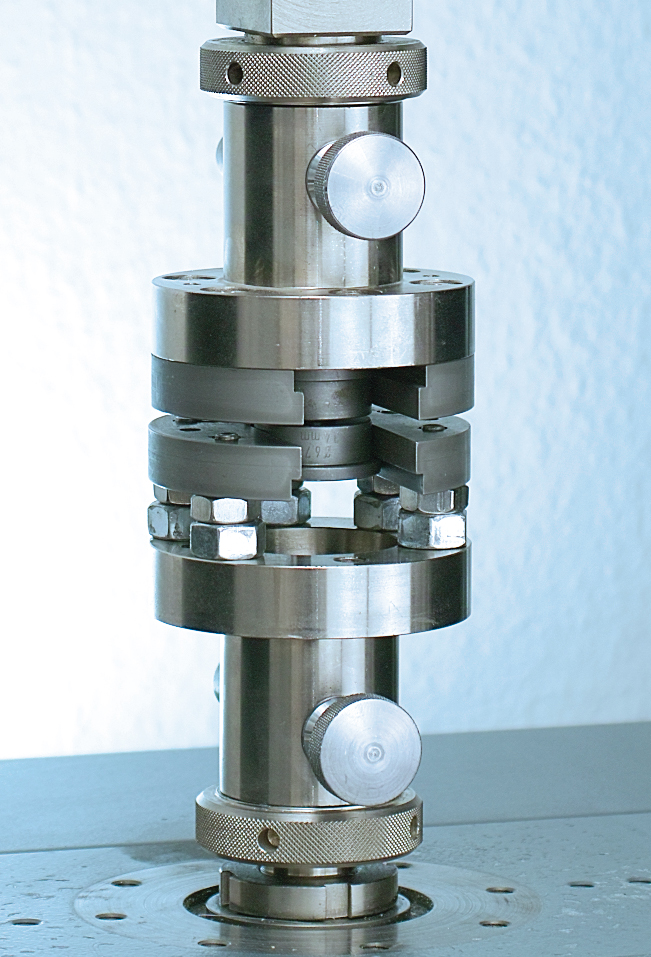
Tensile test

Mandrel push out test
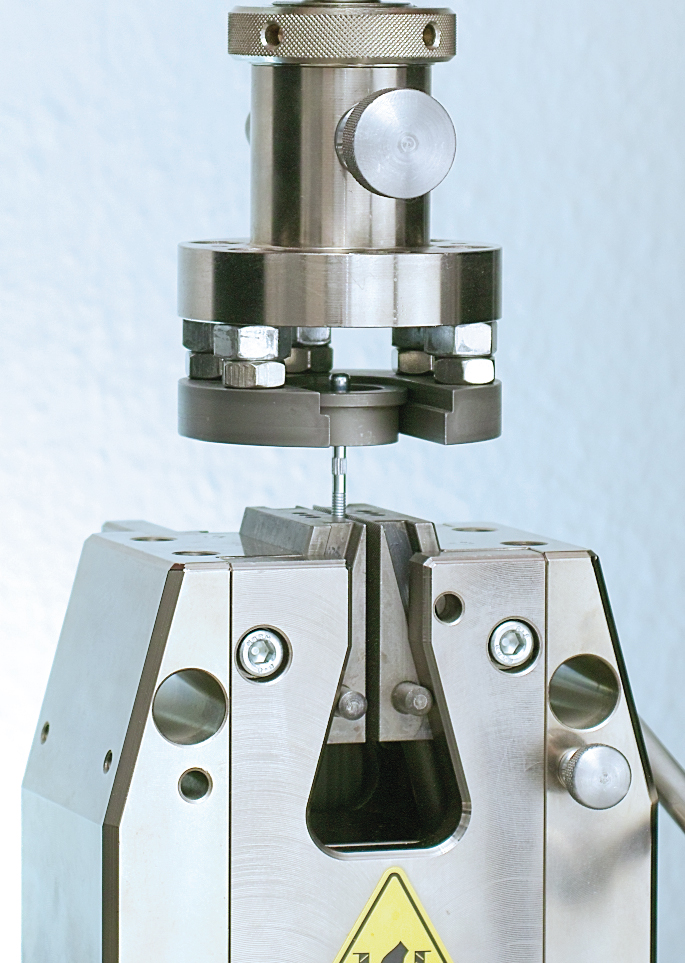
Mandrel breaking test
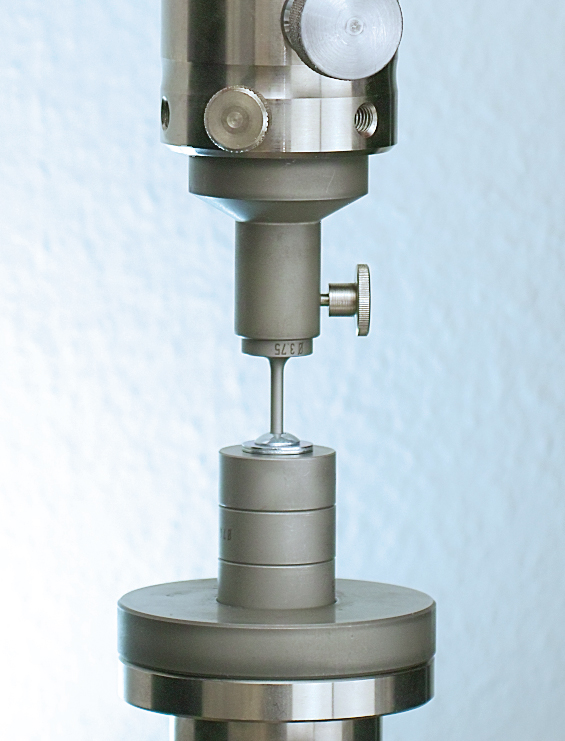
Mandrel retaining test
